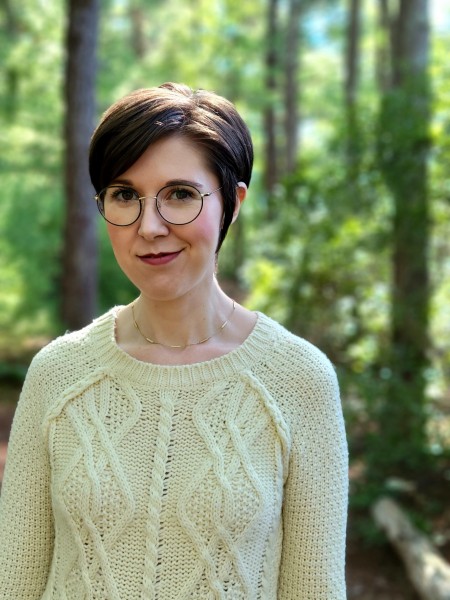Most coming-of-age stories usually involve shedding—a character’s naivety, their youth, former identities, preconceived notions, etc.—but Sam comes into her own by hiding in another’s skin. When you first pictured Sam as a character, was she already under the pelt?
Sam is a character who longs to disappear, to live free from the expectations and judgments of others. She is tired of people thinking she is too poor or ugly or young to wield any power, too undesirable for her mother to stay, too worthless to keep her father sober. While Sam longs to be invisible, to hide from view or vanish herself through harm, this was not the ending I imagined for her. I wanted her to find freedom from the pressures that overwhelmed her. While she ultimately hides from view by donning the pelt, this costuming actually allows her to embrace her own ferocity, her wildness, the kind of power she needs in order finally feel seen.
I’m curious about your process for developing the first line of “Hide.” It summarizes Sam’s story without giving anything away. What goes into crafting a good opening sentence, especially for flash fiction?
One of my favorite pieces of writing advice is to tell the whole story in the title or opening line. Doing so forces you to then write the backstory, to understand the characters, to move in unexpected directions. Plot is never the point—the surrounding world and the characters’ motivations are the real story. By putting the plot in the opening line, writers and readers are invited to undertake a more nuanced exploration of the ideas. I also love an opening line loaded with tension that I then have to relearn and unlearn as I progress through a piece.
This story may be flash fiction, but your use of primal imagery does a lot of work and masterfully builds up to Sam going feral. (For example, when she imagines getting the choir solo “if she could unlock her jaw and let the howl out of her mouth.”) How were you able to discern what specific imagery you wanted to use and where to use it?
I wanted Sam’s ferocity to be a homecoming, a recognition of her own power rather than a decent into madness. To make her animalistic drive inherent, I incorporated primal imagery into her everyday movements and identity. The more interesting story was not of a girl driven to wildness by a cruel world, but one where a girl discovers her ferocity and inherent power in spite of a world that would rather see her weak. By incorporating this imagery as something she possessed all along, Sam is not a girl who changes, crumbles in the face of adversity, but one who discovers her might all along, who becomes more fully herself despite all the ways the world makes her suffer.
The turn into the father’s point of view is smooth, unexpected, and revealing. It opens up the story and, in my opinion, justifies Sam’s departure. While working on this story, was the turn something you planned early on or did it surprise you?
The turn wasn’t something I initially planned, but when it happened in the drafting process, it seemed like the only way to tell Sam’s story. Much of Sam’s early apprehension comes from enduring what people think of her. She is consumed by how others view and reject her, and her world and life narrative become limited as a result. When Sam ceases to care what others think and lives more fully by her primal motives, she gains agency and possibility. For me, the shift into her father’s viewpoint becomes the final marker of Sam’s agency. No longer is she self-conscious, living in her head because of what she believes others think of her. Now she is free to live as she wishes. Like her father, we are left to wonder at her choices, to consider who and what she is, and how she will now live.
And lastly, if you could choose an animal pelt to live in, what would it be?
Since I’m named after a deer—my name is Sarah Fawn, much like Mary Ann—I suppose that pelt is most fitting!



 The core workshop of SmokeLong Fitness is all in writing, so you can take part from anywhere at anytime. We are excited about creating a supportive, consistent and structured environment for flash writers to work on their craft in a community. We are thrilled and proud to say that our workshop participants have won, placed, or been listed in every major flash competition. Community works.
The core workshop of SmokeLong Fitness is all in writing, so you can take part from anywhere at anytime. We are excited about creating a supportive, consistent and structured environment for flash writers to work on their craft in a community. We are thrilled and proud to say that our workshop participants have won, placed, or been listed in every major flash competition. Community works.